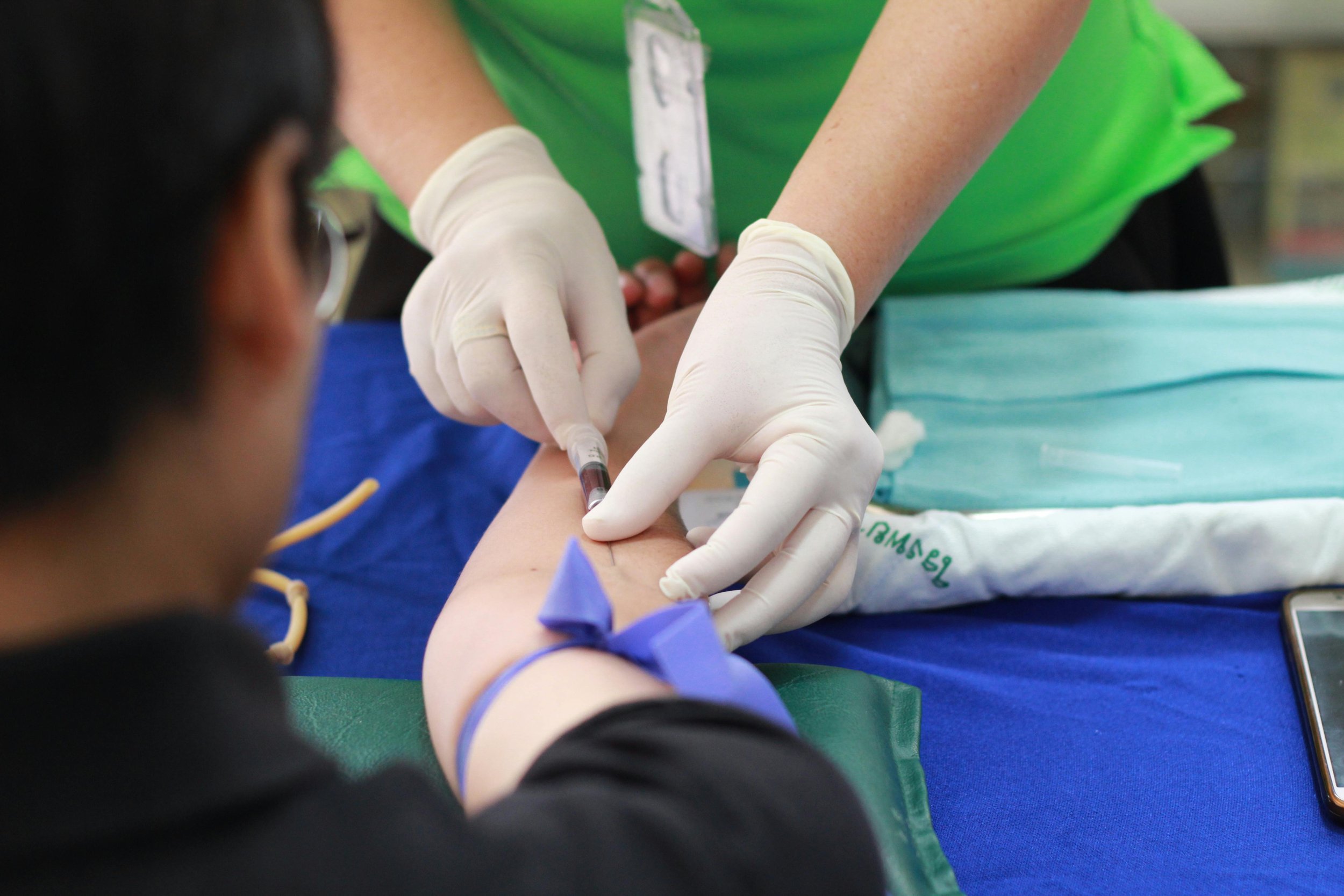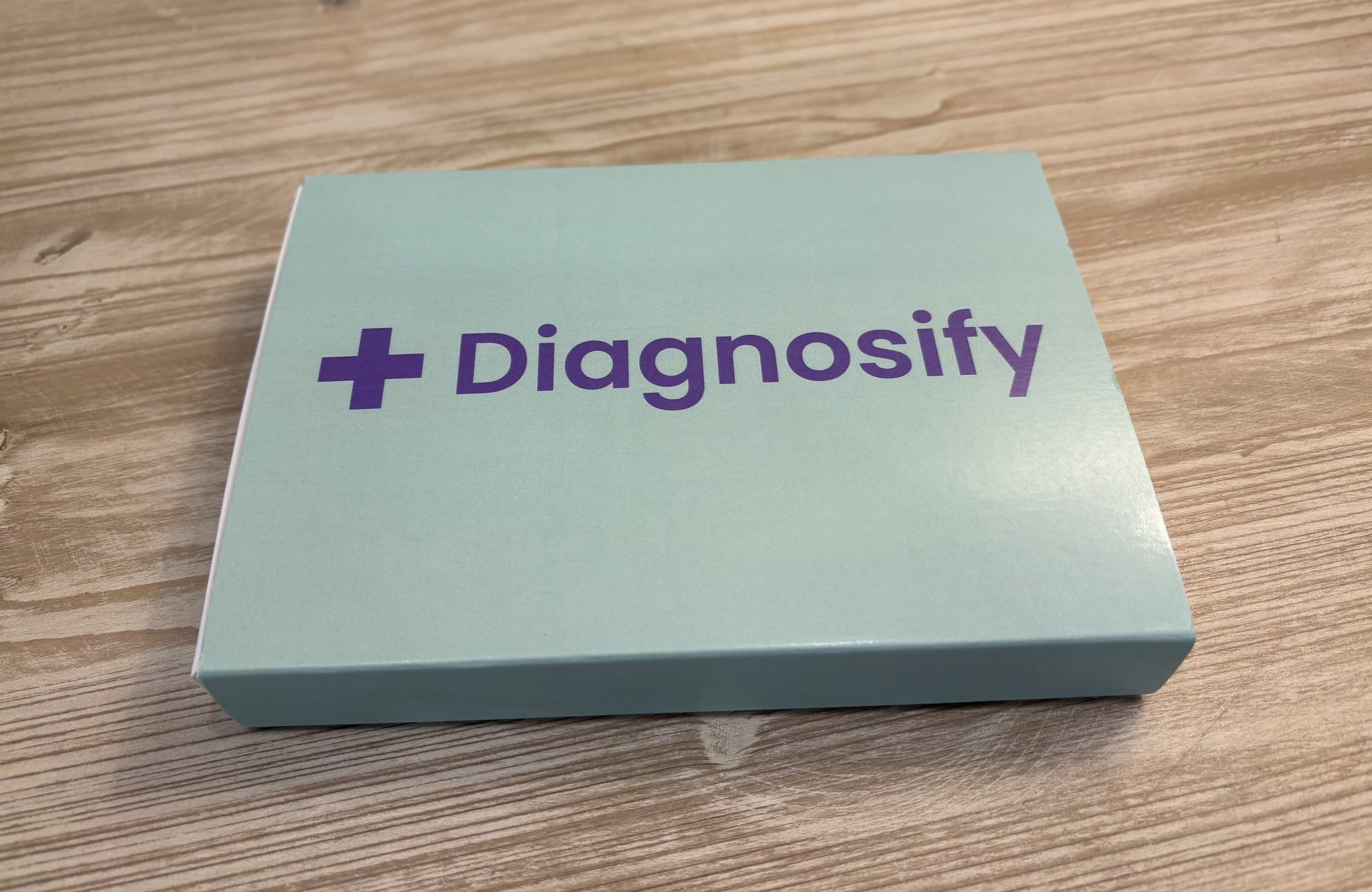Oestradiol Blood Test
Venous & Capillary Blood Sample
1 Biomarker - Oestradiol
Wondering if your oestradiol levels are balanced? Oestradiol (E2) is the primary form of oestrogen, playing a key role in reproductive health, bone strength, and hormone regulation in both men and women. This test is useful for assessing fertility, menstrual cycle irregularities, hormone therapy monitoring, or symptoms of oestrogen imbalance like hot flushes, mood changes, or low libido.
Results expected within 2 working days.
Free delivery
Venous & Capillary Blood Sample
1 Biomarker - Oestradiol
Wondering if your oestradiol levels are balanced? Oestradiol (E2) is the primary form of oestrogen, playing a key role in reproductive health, bone strength, and hormone regulation in both men and women. This test is useful for assessing fertility, menstrual cycle irregularities, hormone therapy monitoring, or symptoms of oestrogen imbalance like hot flushes, mood changes, or low libido.
Results expected within 2 working days.
Free delivery
Venous & Capillary Blood Sample
1 Biomarker - Oestradiol
Wondering if your oestradiol levels are balanced? Oestradiol (E2) is the primary form of oestrogen, playing a key role in reproductive health, bone strength, and hormone regulation in both men and women. This test is useful for assessing fertility, menstrual cycle irregularities, hormone therapy monitoring, or symptoms of oestrogen imbalance like hot flushes, mood changes, or low libido.
Results expected within 2 working days.
Free delivery
Special instructions
How to prepare for your test
Prepare for your Oestradiol Blood Test by following these instructions. Take this test two to five days after the start of your period, ideally on day three. It can be taken any time if you do not have periods. Hormonal contraception can affect this test, taking a break from this and using barrier contraception will give more accurate results. If you use hormone gels, pessaries, patches, or tablets, we strongly recommend selecting a venous sample to minimise contamination sometimes seen with finger-prick tests. Otherwise, administer any hormone supplements using gloves, and make sure your fingers have not been in contact with hormone supplements for at least four weeks before taking the test. Hormones can be absorbed deep within the skin even after minimal contact and remain there for weeks despite vigorous hand washing. Do not take biotin supplements for two days before this test, discuss this with your doctor if it is prescribed.
FAQ’s
-
Oestradiol (also spelled estradiol) is a key form of estrogen, a hormone that plays an essential role in various bodily functions, particularly in the reproductive system. A blood test measuring oestradiol levels can offer several benefits, including:
Monitoring Reproductive Health:
Menstrual Cycle: Oestradiol levels fluctuate throughout the menstrual cycle. Testing can help determine if there are irregularities or imbalances that might be affecting ovulation, menstruation, or fertility.
Fertility: Oestradiol is vital for follicle development and ovulation. Monitoring its levels can assist in fertility assessments and help guide treatments for those trying to conceive.
Assessing Hormonal Imbalance:
Polycystic Ovary Syndrome (PCOS): High levels of oestradiol can be indicative of PCOS, a common hormonal disorder in women. A blood test can assist in diagnosing and managing the condition.
Menopause and Perimenopause: As women approach menopause, oestradiol levels typically decrease. Measuring this hormone can help determine whether a woman is entering menopause or if hormonal therapies may be necessary to alleviate symptoms.
Managing Hormone Replacement Therapy (HRT):
Postmenopausal Symptoms: Women undergoing HRT to manage menopausal symptoms can have their oestradiol levels monitored to ensure the therapy is working effectively.
Personalized Treatment: For women undergoing HRT, testing oestradiol levels allows doctors to adjust dosages or change treatments to maintain balanced hormone levels, optimizing symptom relief.
Diagnosing Estrogen-Related Disorders:
Estrogen Dominance: Elevated oestradiol levels, especially in the absence of progesterone, may indicate estrogen dominance, which can lead to issues such as fibroids, endometriosis, and breast tenderness.
Ovarian Disorders: Elevated or abnormal oestradiol levels can also help in diagnosing ovarian tumors or other reproductive system disorders.
Bone Health:
Osteoporosis Risk: Estrogen plays a critical role in maintaining bone density. Low oestradiol levels, particularly in postmenopausal women, are associated with a higher risk of osteoporosis. Monitoring oestradiol can help assess bone health and guide preventive measures.
Cancer Detection and Monitoring:
Breast and Ovarian Cancer: Oestradiol levels can be used in combination with other tests to assess the risk of or monitor treatment for hormone-sensitive cancers, like certain types of breast cancer or ovarian cancer.
Men’s Health:
Testosterone to Estrogen Imbalance: Although oestradiol is typically associated with women, men also produce small amounts of estrogen. Testing oestradiol levels in men can be used to assess hormone imbalances, which may contribute to symptoms like erectile dysfunction, low libido, or gynecomastia (enlarged breast tissue in men).
In conclusion, a blood test measuring oestradiol levels provides essential information for assessing hormonal balance, fertility, reproductive health, and overall well-being. It plays a critical role in diagnosing and managing a variety of conditions, from menstrual irregularities and fertility issues to menopause and estrogen-related disorders.
N.B. Choose preferred blood taking kit at checkout.




